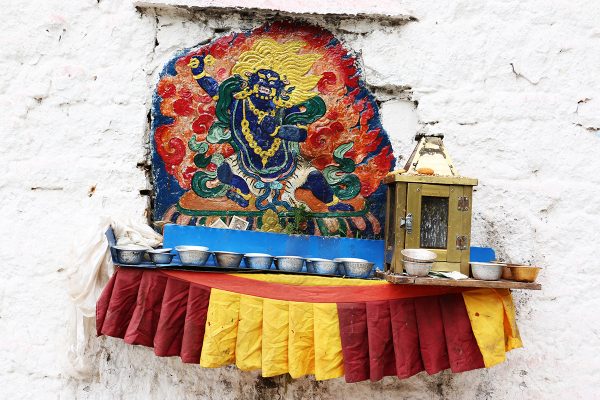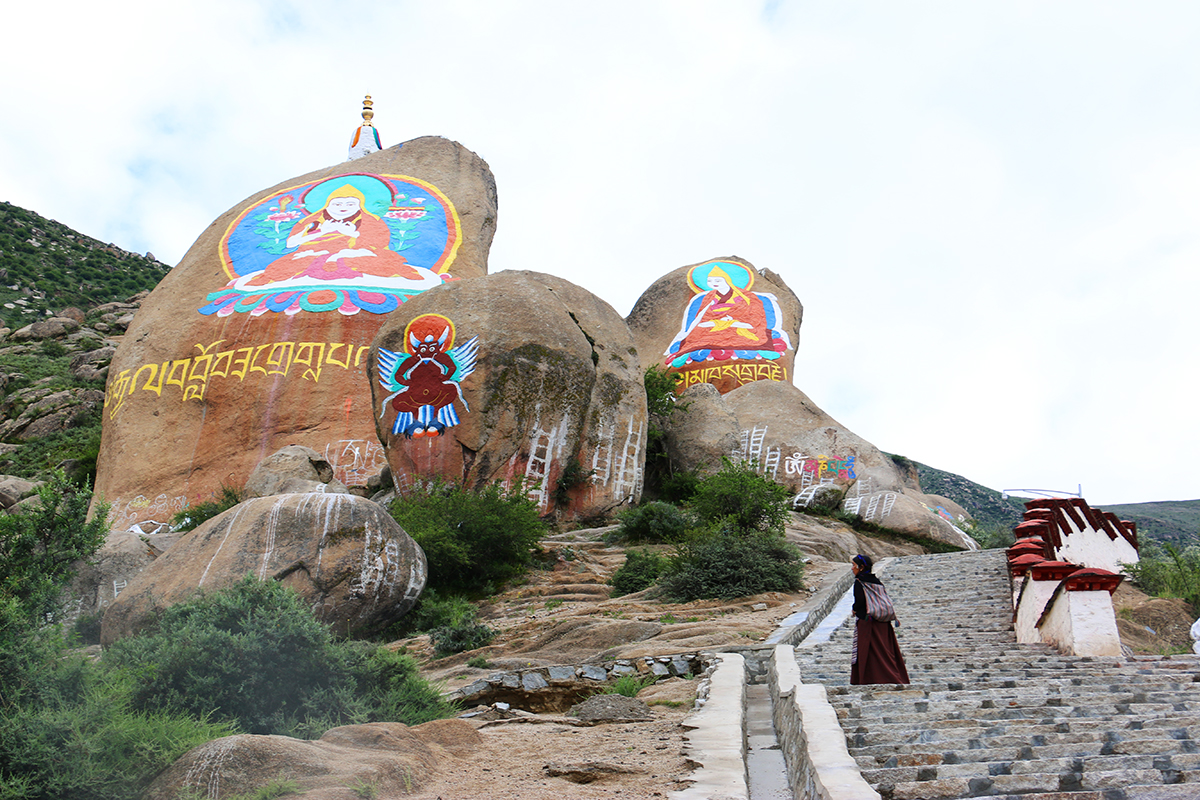
From the ceiling of the Sistine Chapel in the Vatican City to the labyrinthine temple complex of Angkor Wat in Cambodia, history has taught us that religion can be one of the greatest artistic muses. As an ethnic group characterised by their deeply spiritual nature and undeniable piety, the Tibetan people have, over the years, produced some of the finest Buddhist artworks in the world. While retaining many of the features of Indian Buddhism, Tibetan Buddhism incorporates aspects of the indigenous religion of Bön, a trait which is reflected in traditional Tibetan art. This makes Tibetan Buddhist painting and sculpture unlike any in the world, attracting the curiosity and admiration of visitors for its startling uniqueness.
Arguably the most famous of these art forms is the thangka painting, which became popular in Tibet sometime during the 8th century. It is often regarded as an amalgamation of traditional Indian, Nepalese, and Kashmiri styles, with a distinctly Tibetan flair. Thangkas are typically rectangular in shape and painted on cotton, linen, or silk appliqué, with a fringe made of vibrant silk brocade. The subjects of these spectacular paintings revolve around religious, astrological, or theological motifs, including Buddhist deities, influential figures, narrative scenes, and mandalas. The most common type of thangka usually contains a deity at the centre, who is surrounded by other religious figures in a symmetrical composition.
Most thangkas are kept unframed and are relatively small in size, although some are several metres in length. These larger thangkas were designed to be displayed for brief periods on monastery walls as part of religious festivals, such as the Monlam Prayer Festival and the Losar Festival. After the festival, these thangkas are rolled up and must be kept in a dry place to prevent moisture from damaging the cloth. While larger thangkas are for public appreciation, smaller thangkas are meant for personal use as meditative or religiously instructive tools. After all, size doesn’t matter!
The intricacy of thangka paintingsis matched only by the Tibetan sand mandalas, which are constructed by Buddhist monks as part of ritual ceremonies. Natural colouring agents such as crushed gypsum, yellow ochre, red sandstone, charcoal, corn meal, flower pollen, powdered roots, and crushed bark are used to dye the sand, producing a vibrant rainbow of colours. The monks first draw the geometric design that they roughly wish to follow and then delicately apply the sand using small tubes, funnels, and scrapers. A team of monks will work together on a single mandala, moving from the centre outwards and creating one section at a time. Their construction requires significant skill and it can take several weeks to complete one.
Once it is finished, the mandala is ritualistically dismantled as part of an elaborate ceremony. Each part of the mandala is removed in a specific order and the coloured sand is collected in a jar, which is then wrapped in silk and taken to a river, where it is released. The mandala is meant to represent the beauty of the natural world, while its destruction symbolises the transitory nature of material life. The practice is thought to help monks re-focus their efforts on attaining enlightenment, rather than become distracted by the material world. In short, we are all nothing more than dust in the wind, or should we say sand in the river!

On a much smaller scale, tsaklis are Tibetan Buddhist miniature paintings that are normally produced as part of a set and feature a single deity, or a pair of deities. Much like the thangka, they are painted on cloth, although there are some tsaklis that are woodblock-printed onto paper. A set of tsaklis can comprise of anywhere from 6 to 100 small paintings on similar subjects. They are primarily used as offerings at temples or during religious ceremonies. For example, a tsakli featuring protective deities might be mounted near a construction site where a temple is being built, or might be used by a Buddhist monk to dispel evil energy from a sick person. Some pilgrims will even carry a tsakli with them in a portable shrine or box known as a “gau”, which is hung around their neck or attached to a shoulder strap.
Much Tibetan art, including both the thangka and the sand mandala, is part of a wider Buddhist tradition known as tantra, which originated from Tantric or Vajrayana Buddhism. The basic concept behind this practice is that the practitioner should try to visualize themselves as a specific Buddhist deity and try to internalise the qualities of that deity. The artwork simply serves as a tool to aid these visualisations. In short, think of them as textbooks for the achievement of enlightenment!